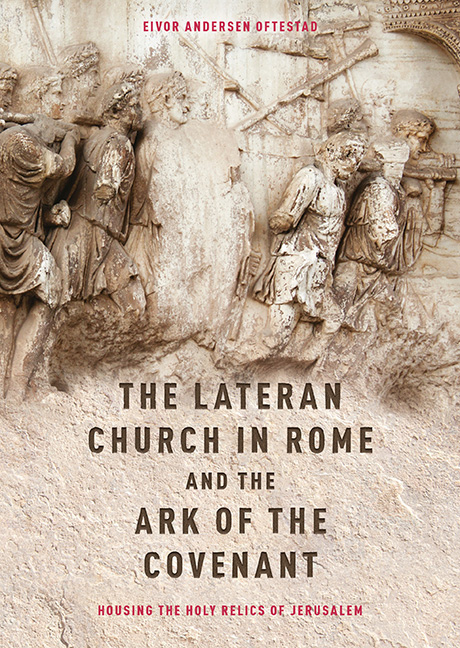 The Lateran Church in Rome and the Ark of the Covenant: Housing the Holy Relics of Jerusalem
The Lateran Church in Rome and the Ark of the Covenant: Housing the Holy Relics of Jerusalem Book contents
- Frontmatter
- Dedication
- Contents
- List of Tables
- Acknowledgements
- List of Abbreviations
- Author's Note
- Prologue
- 1 Introduction
- 2 The Description of the Lateran Church
- 3 In the Roman Context
- 4 In the Northern French Context
- 5 In the Jerusalem Context
- 6 The Temple of the New Covenant
- 7 Nikolaus Maniacutius and John the Deacon
- Epilogue
- Appendix 1 Manuscripts Transmitting the Descriptio Lateranensis Ecclesiae
- Appendix 2 Different Versions of the Descriptio Lateranensis Ecclesiae
- Appendix 3 Edition and Translation of the Descriptio Lateranensis Ecclesiae (Reg. lat. 712)
- Bibliography
- Index
- Other volumes in Studies in the History of Medieval Religion
5 - In the Jerusalem Context
Published online by Cambridge University Press: 31 August 2019
- Frontmatter
- Dedication
- Contents
- List of Tables
- Acknowledgements
- List of Abbreviations
- Author's Note
- Prologue
- 1 Introduction
- 2 The Description of the Lateran Church
- 3 In the Roman Context
- 4 In the Northern French Context
- 5 In the Jerusalem Context
- 6 The Temple of the New Covenant
- 7 Nikolaus Maniacutius and John the Deacon
- Epilogue
- Appendix 1 Manuscripts Transmitting the Descriptio Lateranensis Ecclesiae
- Appendix 2 Different Versions of the Descriptio Lateranensis Ecclesiae
- Appendix 3 Edition and Translation of the Descriptio Lateranensis Ecclesiae (Reg. lat. 712)
- Bibliography
- Index
- Other volumes in Studies in the History of Medieval Religion
Summary
Thus saith the Lord, ‘The heaven is my throne, and the earth is my footstool: where is the house that ye build unto me? and where is the place of my rest?’
The Dome of the Rock and Templum Domini AN ‘OPEN SPOT’
In Jerusalem there was one place that particularly exhibited the potentially competitive relationship between the earthly Church and the earthly Jerusalem: the Dome of the Rock. When the crusaders besieged Jerusalem in July 1099, the site was an ‘open spot’ and there was no established interpretation of the Dome. It was probably regarded as a pagan building, as the ‘righteous’ spoils of war. This can at least be suggested based on Albert of Aachen's description of Tancred's plundering of the Dome:
… Tancred, who ran quickly ahead to the Temple of the Lord in the first invasion of the city, pulled back the bolts and entered it, and tore off an incomparable quantity of gold and silver from the walls, which were gilded about with columns and pillars, with the strength and assistance of his escort, exerting himself for two days in the seizure of this treasure, which had been brought together by the Turks to decorate the chapel.
The description of the pillaging – which took place immediately after the conquest – shows that the Dome of the Rock was a confusing building to the first crusaders. This was not least because the temple platform had been closed to the Christians during Abbasid rule. Unlike the situation at the Holy Sepulchre and other Christian churches, there was thus no continuity between the beliefs of the Byzantine Christians and the (Western) Christian interpretations of the place after the siege of the city.
Shortly after the conquest, in 1099–1100, the chapter of Templum Domini was established, and in the following decades its status could compete even with that of the chapter of the Holy Sepulchre. The newly settled Christians and the pilgrims of Jerusalem put forward various ideas about the origin of the building of Templum Domini: some maintained that it had been built by Solomon; the pilgrim Saewulf (1101–1103) proposed that its builder was the Roman emperor Hadrian; Albert of Aachen suggested ‘Christian worshippers’;
- Type
- Chapter
- Information
- The Lateran Church in Rome and the Ark of the Covenant: Housing the Holy Relics of JerusalemWith an Edition and Translation of the Descriptio Lateranensis Ecclesiae (Bav Reg. Lat. 712), pp. 84 - 120Publisher: Boydell & BrewerPrint publication year: 2019


